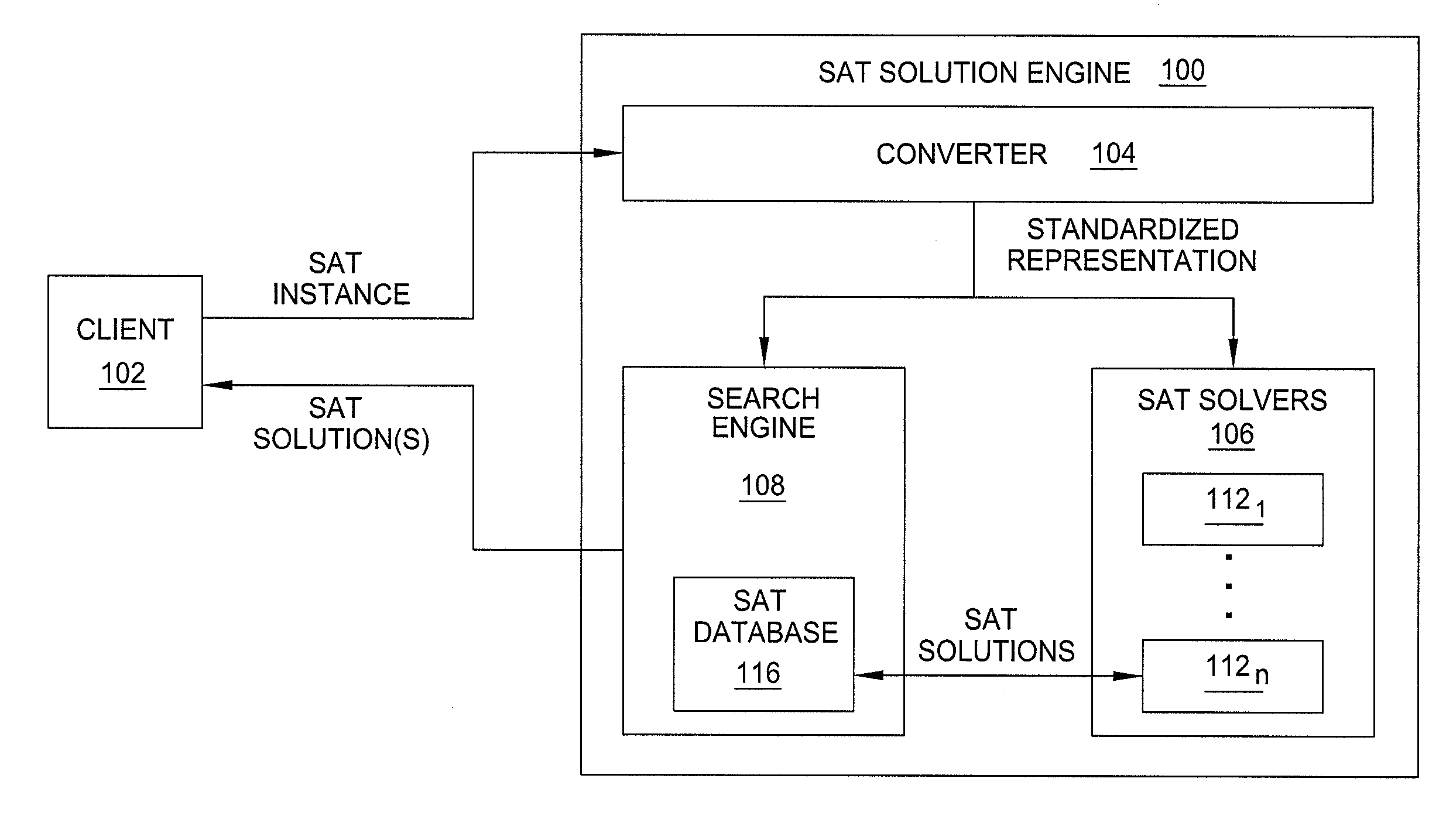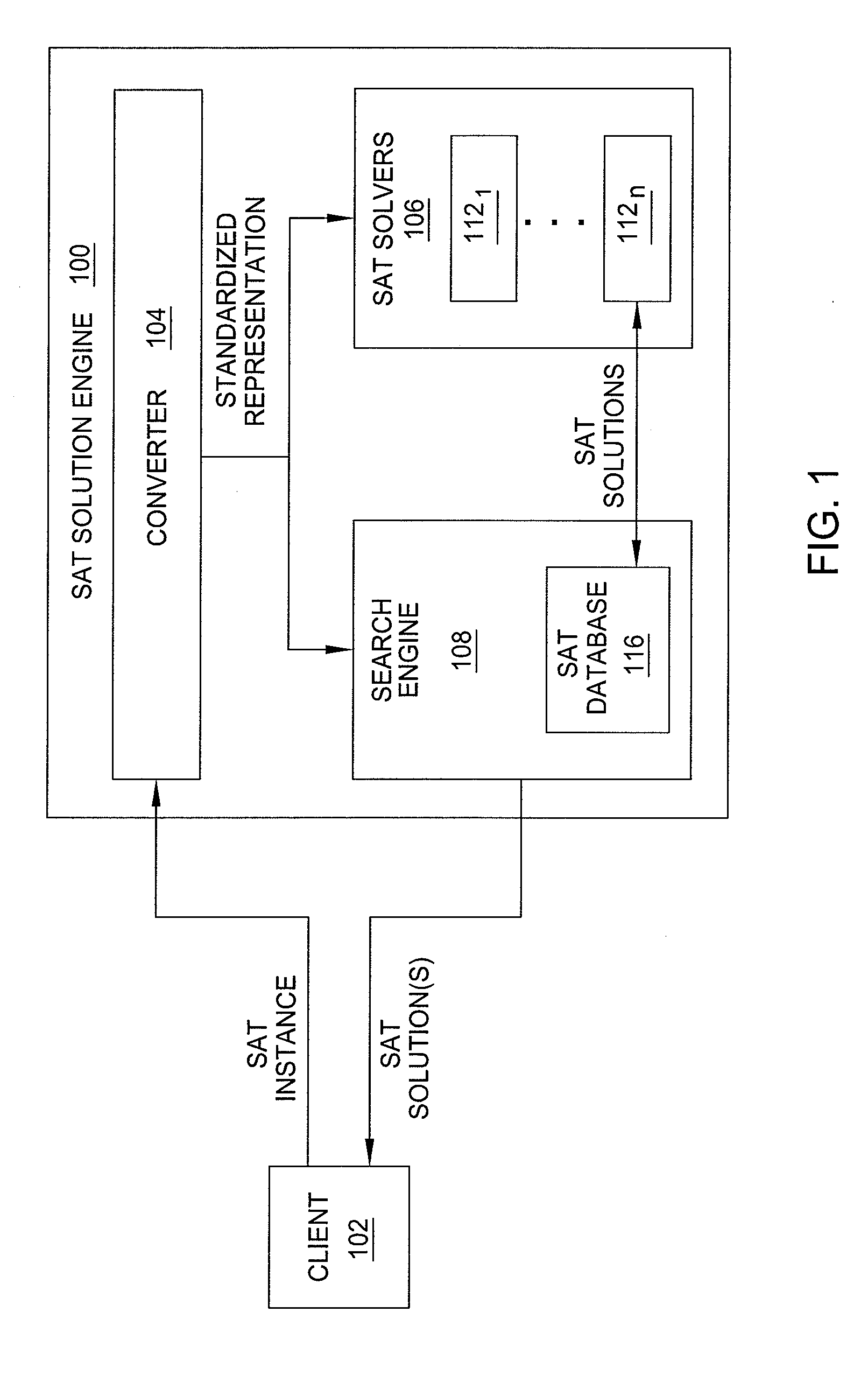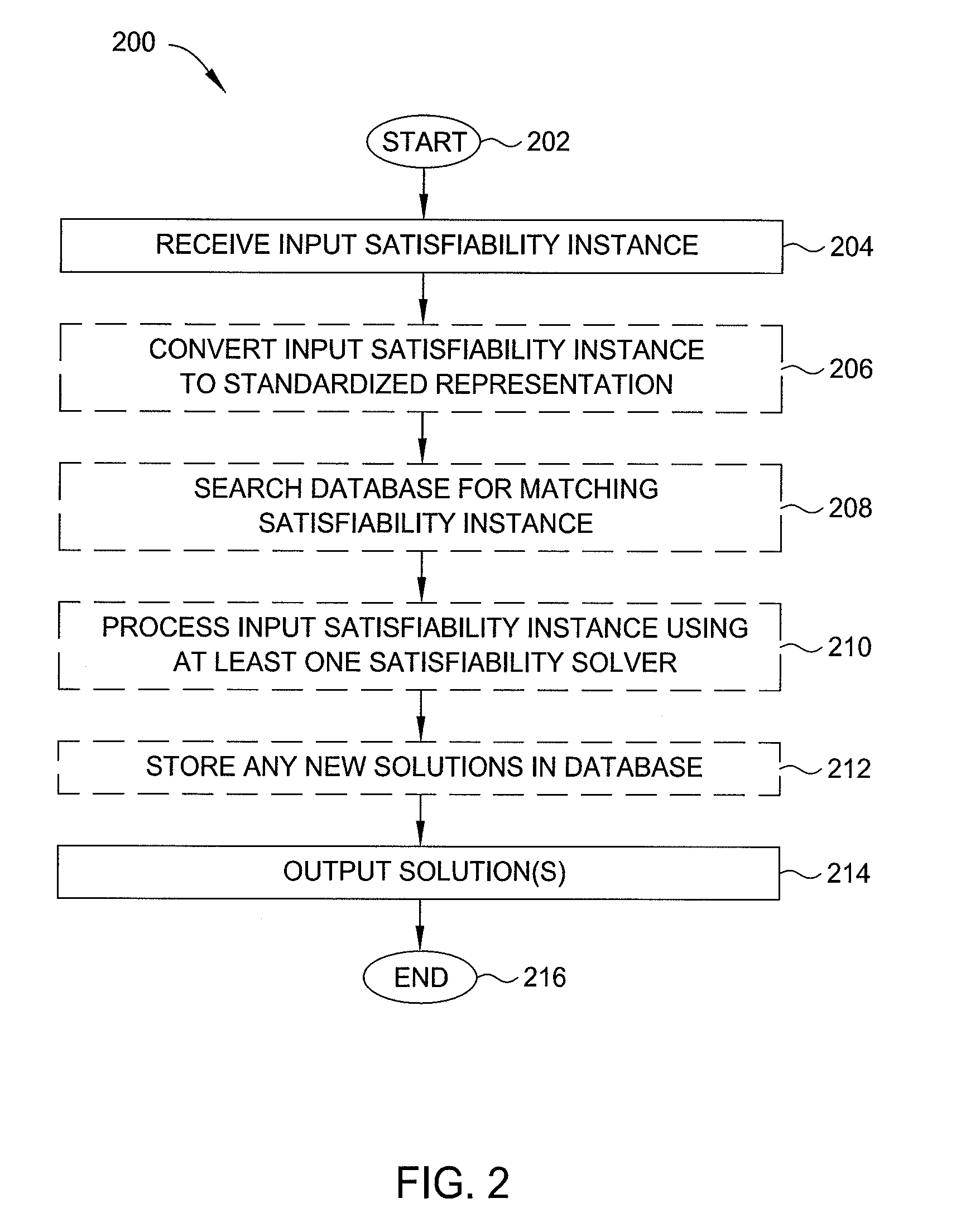Solving satisfiability problems through search
a technology of satisfiability and search, applied in the field of computer science, can solve the problems of unsatisfactory true evaluation, no known algorithm that can efficiently solve all instances of satisfiability, and exhibit exponential run times, and achieve the effect of facilitating searching
- Summary
- Abstract
- Description
- Claims
- Application Information
AI Technical Summary
Benefits of technology
Problems solved by technology
Method used
Image
Examples
Embodiment Construction
[0018]In one embodiment, the present invention is a method and apparatus for solving satisfiability problems through search. A satisfiability problem is a problem in propositional logic that asks for a truth-assignment to a set of variables that will satisfy (i.e., make true) a conjunction of disjunctive clauses over these variables. In other words, the truth-assignment to the variables makes all clauses true. If such a truth-assignment can be found, the problem is said to be satisfiable; if no such truth-assignment is found, the problem is unsatisfiable (or is a “contradiction”). Embodiments of the invention provide a searchable repository of solutions to satisfiability instances. When a solver receives a satisfiability instance for which a solution is desired, it may search the repository for a stored solution as an alternative to or in addition to attempting to solve the instance. Because modern memory is relatively cheap (e.g., compared to processors) and search engines can be v...
PUM
 Login to View More
Login to View More Abstract
Description
Claims
Application Information
 Login to View More
Login to View More - R&D
- Intellectual Property
- Life Sciences
- Materials
- Tech Scout
- Unparalleled Data Quality
- Higher Quality Content
- 60% Fewer Hallucinations
Browse by: Latest US Patents, China's latest patents, Technical Efficacy Thesaurus, Application Domain, Technology Topic, Popular Technical Reports.
© 2025 PatSnap. All rights reserved.Legal|Privacy policy|Modern Slavery Act Transparency Statement|Sitemap|About US| Contact US: help@patsnap.com



